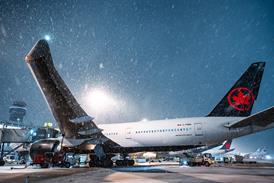Lockheed Martin is confident about the prospects of the F-35A Lightning II in the Asia-Pacific region, following its recent victory in Japan's 42 aircraft F-X competition.
"The Japan selection is an indication of the confidence that's growing in the programme among the international customer base for the F-35," said Dave Scott, director of Lockheed Martin's F-35 international business development. "It was a very important decision."
Scott said Lockheed Martin is in discussions with Mitsubishi Heavy Industries about the local assembly line for the aircraft. Under the F-X deal, the first four aircraft will be delivered to Japan in the USA in 2016. These will be used for training air and ground crew. The subsequent 38 aircraft will be built in Japan.
"We're engaged in the industry-to-industry and government-to-government dialogues to implement the Japanese final assembly and checkout production line in Japan as fast as is possible," said Scott.
Japanese teams have also visited Lockheed Martin's F-35 production line in Fort Worth, Texas, to gain a better understanding of the infrastructure and processes involved in producing the aircraft.
In the F-X competition, the F-35 defeated rival bids from Boeing with its F/A-18 E/F Super Hornet and the Eurofighter consortium with its Typhoon.
Lockheed Martin is also preparing its response to South Korea's request for proposals in its F-X III requirement for around 60 aircraft. Its rivals in the competition are the Boeing F-15 Silent Eagle and Eurofighter Typhoon.
With regard to Seoul's indigenous KFX fighter programme, in which the winner of F-X III will likely be required to assist with the development of the KFX, Scott would only note that Lockheed has had long experience working with Korean Industry. Korea Aerospace Industries assembled the F-16 under licence, and Lockheed played a major role in the Korea Aerospace Industries' (KAI) T-50 advanced jet trainer.
"Fifth generation F-35 capabilities are essential for future security and stability," he added. "In this region, all three US services will soon be operating F-35s in places such as Japan, South Korea, Guam."
He pointed out that countries such as China and Russia are developing stealth aircraft, the Chengdu J-20 and Sukhoi PAK FA, which creates a requirement for aircraft with stealth technology, integrated sensors, and connectivity.
"To make a stealth aircraft, you need to carry all the sensors and weapons internally to make the aircraft very smooth," he said. "You have to align the edges of the airplane, bury the engines so you can't bounce a radar beam off the front of them. This means you can't add stealth to an existing platform. Stealth isn't something you can retrofit."
Source: Flight International























